Clifford's Tower |
|
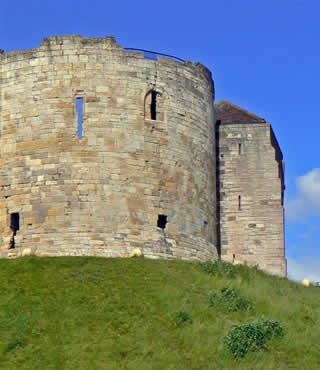 |
|||
A castle standing alone, on a green mound of earth in the centre of York |
||||
Listen to this article |
||||
|
||||
 |
||||
York Castle (Clifford's Tower) stands alone, on a green mound of earth in the centre of the city. From this vantage point, it has seen nearly a millenium's worth of history go by. |
||||
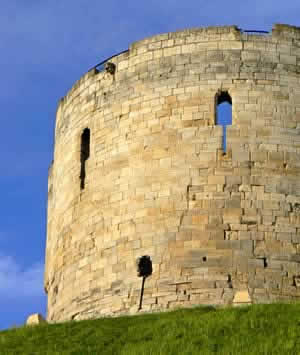 |
||||
It was built by William the Conqueror of Normandy in 1068, just after his victory in the Battle of Hastings. Unfortunately, this first version of the structure didn't last long. The local residents, still unhappy with their new rulers, rose up and attacked, and so, in defence, the Normans decided to set fire to all of the surrounding houses. This quickly turned out to be a mistake, because the flames quickly spread, and although the houses did indeed burn down - so did the castle! |
||||
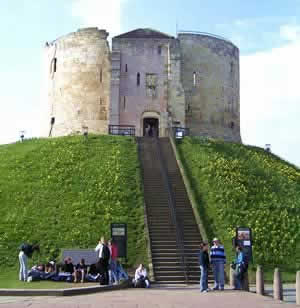 Steps leading to Clifford's Tower Photo Neil T |
||||
To their credit, the Normans didn't worry too much - they simply built another one. This turned out to be a recurring theme in York Castle's first years. Barely a moment went by when it wasn't under attack. In the year 1190 it was the scene of a vicious riot against the city's Jewish population. The Jews sought sanctuary in the castle but to no avail. Though many of them chose to commit suicide rather than be captured, the rest were either burned to death when the castle was set alight, or were eventually murdered by the violent crowd. |
||||
Then in 1244, when the Scots were threatening to invade England, King Henry III decided that enough was enough. He rebuilt the entire structure in stone, for the unthinkable sum of £2500. |
||||
This prompted a rise in prominence for the castle, which was used frequently by the country's monarchs for several hundred years. The first three Kind Edwards chose it as their treasury, keeping large stocks of valuables here during their various different wars and campaigns. In fact, they had such faith in the security York Castle offered that they began to use it as a home for their wives and relatives. At times it also acted as a mint, making money for the entire northern region. |
||||
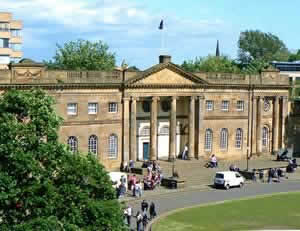 The view of Castle Museum from Clifford's Tower |
||||
|
||||
During this period, stonemasons were almost continually being employed to improve, extend, or reinforce the walls, towers and keeps. The work was mostly successful, apart from one instance where a guardsman was found guilty of stealing stonework from one of the towers. Besides this, the castle stood firm until 1684, when a faulty artillery gun blew up. |
||||
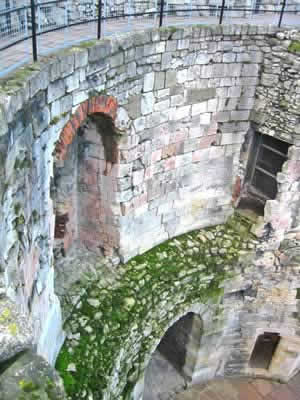 The Inner Walls Photo nyaa birdies perch |
||||
The explosion left the main tower almost completely in ruins. At first this seemed like an accident, but it soon turned out that there were no guards inside at the time. Even more suspiciously, the soldiers had removed their possessions when they left! The culprit was never found, but in truth it could have been anybody in York - the castle was extremely unpopular among the townsfolk, who referred to it as The Minced Pie! |
||||
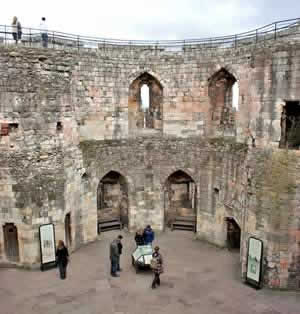 Wandering inside Clifford's Tower Photo Stephen Hynds |
||||
As always though, it was soon rebuilt, and today, it is still an impressive sight. It dominates the surrounding area, giving a glimpse of how imposing it must have been in years gone by. Clifford's Tower is open to the public and its spiral staircase may be climbed to gain a fabulous view of York's skyline. It's very easy to imagine this Castle continuing to watch over the city for another millennium, and beyond. |
||||
|
||||
Clifford's Tower is maintained by English Heritage. It is open daily 10am to 6pm (4pm in winter). Entry costs around £4. Tel: 01904 646940 |
||||
|
Pocket Britain is optimised for use on a smartphone or tablet with internet access. All content is subject to copyright. All reasonable methods have been used to ensure information supplied is accurate at the time of publication. However, it is advisable to check information before relying on it. Privacy Policy |